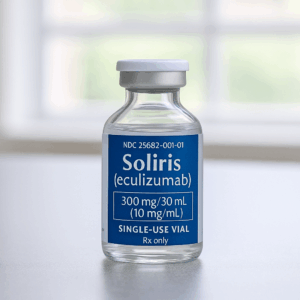Last Updated on September 9, 2025
September marks National Sickle Cell Awareness Month, a time to focus attention on the urgent need for research, treatment, and support for individuals living with sickle cell disease (SCD). This year’s theme, “Sickle Cell Matters 2025,” emphasizes the critical importance of raising awareness about this inherited blood disorder that affects approximately 100,000 Americans.
What is Sickle Cell Disease?
Sickle cell disease is the most common inherited blood disorder in the United States. It’s a group of genetic conditions that affect the red blood cells, causing them to change from their normal round shape to a crescent or “sickle” shape. These sickle-shaped cells contain abnormal hemoglobin called hemoglobin S, which can cause severe complications throughout the body.
Key Sickle Cell Disease Statistics:
- Affects approximately 100,000 people in the United States
- More than 90% of those affected are non-Hispanic Black or African American
- An estimated 3%-9% are Hispanic or Latino
- Occurs in about 1 out of every 365 Black or African American births
- Occurs in about 1 out of every 16,300 Hispanic American births
- More than 500,000 babies are born with SCD worldwide each year
Understanding Sickle Cell Trait vs. Sickle Cell Disease
It’s important to distinguish between sickle cell trait and sickle cell disease. Millions of Americans have sickle cell trait but don’t know it because the trait usually doesn’t cause illness. However, if both parents have sickle cell trait, there is a 25% chance with each pregnancy that their child could be born with sickle cell disease.
Common Sickle Cell Disease Complications
Sickle cell disease can cause numerous health complications affecting the entire body, including:
- Pain Crises: Episodes of severe pain caused by sickle-shaped cells blocking blood flow
- Acute Chest Syndrome: A serious lung condition that can be life-threatening
- Stroke: Increased risk due to blocked blood vessels in the brain
- Organ Damage: Chronic damage to organs including the kidneys, liver, and spleen
- Infections: Increased susceptibility due to compromised immune function
- Anemia: Fatigue and weakness due to shortage of healthy red blood cells
Sickle Cell Disease Treatment Options
While there is currently no universal cure for sickle cell disease, several treatments can help manage symptoms and prevent complications:
Hydroxyurea
Hydroxyurea is the most commonly prescribed medication for sickle cell disease. It helps reduce the frequency of pain crises and other complications by increasing the production of fetal hemoglobin.
Newer Treatment Options
Recent advances include medications like Adakveo (crizanlizumab), which can help reduce the frequency of pain crises in adults and adolescents with sickle cell disease.
Blood Transfusions
Blood transfusions are one of the most critical treatments for sickle cell patients, helping to increase the number of normal red blood cells and reduce complications.
Gene Therapy and Bone Marrow Transplants
These cutting-edge treatments offer new hope, with gene therapy recently becoming available through specialized programs.
Financial Assistance Programs for Sickle Cell Disease
Managing sickle cell disease can be financially challenging, but several assistance programs are available to help patients access necessary treatments and medications:
Patient Assistance Programs:
- Assistance Fund, Inc. – Sickle Cell Disease Assistance Program – Provides financial assistance for sickle cell disease treatments
- Cayenne Wellness Center – SCD Client Assistance – Offers specialized client assistance for sickle cell disease patients
- Accessia Health – Patient Assistance Programs – Comprehensive patient assistance programs for various conditions including SCD
- Chiesi Total Care – Patient support services and financial assistance
- HealthWell Foundation – Sickle Cell Fund – Dedicated fund providing financial assistance for sickle cell disease treatments
- NMDP – Sickle Cell Disease Fertility Preservation Grant – Specialized grant program for fertility preservation in SCD patients
- Patient Access Network (PAN) Foundation – Sickle Cell Disease – Financial assistance for sickle cell disease medications and treatments
- UPMC Adult Sickle Cell Disease Program – Comprehensive adult sickle cell disease program with support services
Medication Assistance and Pricing Information
Finding affordable medication is crucial for sickle cell disease management. NeedyMeds provides valuable resources for medication assistance:
Key Medications:
- Hydroxyurea Programs – Find assistance programs specifically for hydroxyurea
- Adakveo (Crizanlizumab) Programs – Locate financial assistance for this newer SCD treatment
Drug Pricing Tool:
Use the NeedyMeds Drug Discount Card and Price Calculator to find competitive pricing for sickle cell disease medications and access discount programs.
The Importance of Blood Donations
Blood transfusions play a crucial role in sickle cell disease treatment, yet less than 10% of Americans donate blood. Patients with sickle cell disease benefit most from blood donations from people of similar ethnic backgrounds, making diverse blood donation particularly important.
Getting Tested for Sickle Cell Disease and Trait
Early detection is key to managing sickle cell disease effectively. Testing is typically performed:
- During routine newborn screening (within 24-48 hours of birth)
- As part of prenatal care to determine carrier status
- Through simple blood tests for adults who haven’t been previously tested
Living with Sickle Cell Disease
While sickle cell disease presents significant challenges, many individuals live full, productive lives with proper medical care, family support, and access to treatment resources. Advances in research continue to offer hope for improved treatments and potential cures.
How You Can Help During Sickle Cell Awareness Month
- Get tested to know your sickle cell trait status
- Donate blood to help support patients who require transfusions
- Share awareness on social media using #SickleCellAwarenessMonth and #SickleCellMatters2025
- Support research by donating to sickle cell organizations
- Advocate for better healthcare access and insurance coverage for SCD treatments
Conclusion
National Sickle Cell Awareness Month serves as a vital reminder of the ongoing need for increased awareness, research funding, and improved access to care for individuals living with sickle cell disease. By understanding this condition, supporting research efforts, and advocating for those affected, we can work together toward a future with better treatments and ultimately, a cure for sickle cell disease.
If you or someone you know is affected by sickle cell disease, remember that you’re not alone. The resources and assistance programs listed above can provide valuable support in managing this condition. Always consult with healthcare professionals for personalized medical advice and treatment planning.
This information is for educational purposes only and should not be considered medical advice. Always consult with qualified healthcare professionals for diagnosis, treatment, and medical management of sickle cell disease.




